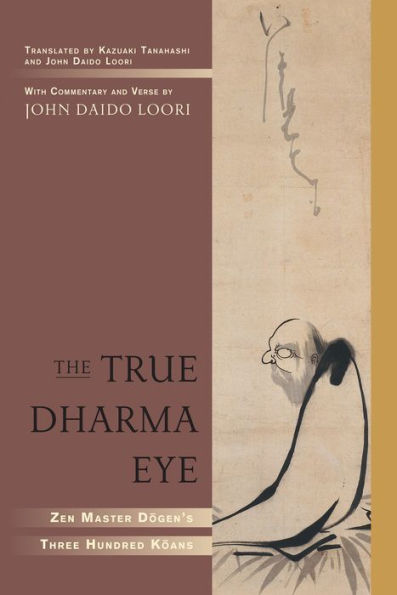A collection of three hundred koans compiled by Eihei Dogen, the thirteenth-century founder of Soto Zen in Japan, this book presents readers with a uniquely contemporary perspective on his profound teachings and their relevance for modern Western practitioners of Zen. Following the traditional format for koan collections, John Daido Loori Roshi, an American Zen master, has added his own commentary and accompanying verse for each of Dogen’s koans. Zen students and scholars will find The True Dharma Eye to be a source of deep insight into the mind of one of the world’s greatest religious thinkers, as well as the practice of koan study itself.
1103164773
The True Dharma Eye: Zen Master Dogen's Three Hundred Koans
A collection of three hundred koans compiled by Eihei Dogen, the thirteenth-century founder of Soto Zen in Japan, this book presents readers with a uniquely contemporary perspective on his profound teachings and their relevance for modern Western practitioners of Zen. Following the traditional format for koan collections, John Daido Loori Roshi, an American Zen master, has added his own commentary and accompanying verse for each of Dogen’s koans. Zen students and scholars will find The True Dharma Eye to be a source of deep insight into the mind of one of the world’s greatest religious thinkers, as well as the practice of koan study itself.
28.99
In Stock
5
1

The True Dharma Eye: Zen Master Dogen's Three Hundred Koans
528
The True Dharma Eye: Zen Master Dogen's Three Hundred Koans
528Related collections and offers
28.99
In Stock

Product Details
| ISBN-13: | 9780834823112 |
|---|---|
| Publisher: | Shambhala |
| Publication date: | 08/11/2009 |
| Series: | Shambhala Publications |
| Sold by: | Penguin Random House Publisher Services |
| Format: | eBook |
| Pages: | 528 |
| File size: | 2 MB |
About the Author
From the B&N Reads Blog
